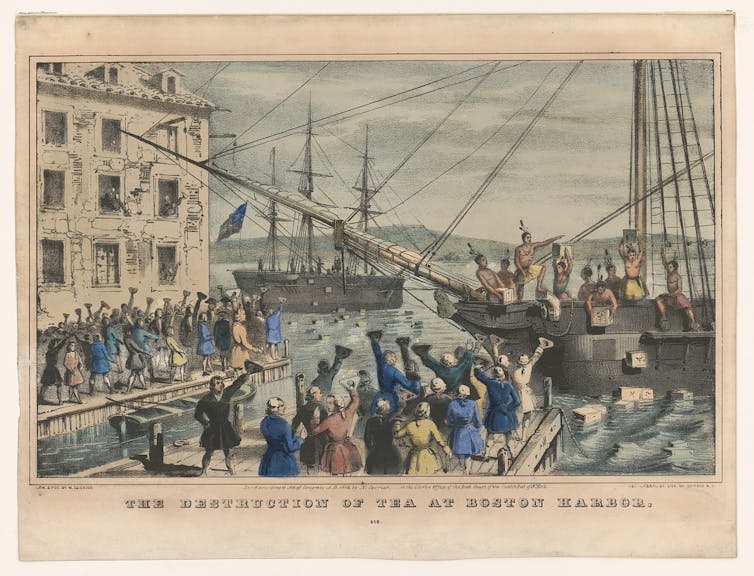Source: The Conversation – Canada – By David Silver, Chair in Business and Professional Ethics, University of British Columbia
Aspiring autocrats are increasingly pressuring businesses to co-operate with their quest for wealth and power, such as by demanding they direct corporate funds towards their personal enrichment or fire personnel who are critical of them.
Autocrats undermine democratic societies by rejecting the rule of law, the separation of powers, free and fair elections and the rights of vulnerable groups. They also threaten free markets by tying business success to political co-operation and obedience rather than to skill in the marketplace.
On this International Day of Democracy, these threats remind us that the business community is a critical part of democratic society and it shares responsibility for protecting it.
Public reaction often splits when companies are regarded as having capitulated to autocratic demands, as when Paramount settled a lawsuit with U.S. President Donald Trump over editorial decisions in the production of a CBS interview.
In such cases, some direct their anger towards the companies, arguing they have an obligation to resist. Others argue that such moral anger is misplaced because these businesses are simply acting in a rational manner to protect their interests.
These two reactions mirror a longstanding division over the moral agency of businesses and the responsibilities they hold in society.
Finances versus morals
While business ethicists see corporations as governed by a range of moral duties, many others see them as pure profit-maximizers who cannot be held to any moral standard. Legal scholar Joel Bakan, for instance, argued in his 2004 book that if a corporation were a real person, it would be a psychopath.
According to this “psychopathic” view, society can positively shape the behaviour of corporations through regulation and enforcement. Businesses can also claim that it’s good for their bottom line to align their actions with the interests of their stakeholders and the rest of society.

(Oxford Academic)
However, whether it’s in a company’s best financial interest to adhere to any moral standard is ultimately an empirical question. Doing the “right” thing does not necessarily guarantee the highest profit.
The moral case for businesses to resist autocratic demands is more straightforward. As a scholar in business ethics, I recently wrote about this in Corporations and Persons: A Theory of the Firm in Democratic Society.
The book uses philosophical methods to argue that, despite metaphysical, economic and legal arguments to the contrary, corporations are fully morally accountable for their actions and they have a number of moral duties relating to the democratic governance of society.
Defending liberal democracy
Liberal democratic states like Canada share a fundamental commitment to the freedom and equality of all their citizens, and it’s the shared responsibility of everyone in society to help uphold these commitments when they’re threatened.
The idea that even businesses have a duty to help protect liberal democracy is not new. Consider American economist Milton Friedman, a conservative icon who famously argued that the primary social duty of firms is to make profits for shareholders.
Writing against the backdrop of the Cold War, he decried how the business leaders of his time were channelling society into an oppressive form of socialism through a misguided sense of “social responsibility,” and urged them to resist participating in this march towards “unfreedom.”
A similar call is appropriate as business leaders respond to the demands of today’s autocrats. When these leaders capitulate, it further consolidates autocratic power and makes it harder for other institutions — such as law firms and universities — to resist. Each act of capitulation is thereby another step away from a free society.
The moral responsibility of businesses
When acts of resistance are completely futile, we may excuse businesses that capitulate to authoritarian demands. But these excuses don’t hold up for powerful companies whose public resistance can help stem the rising tide of authoritarianism.
Those who believe that companies bear no moral responsibility will argue that their responses to autocratic demands are driven solely by self-interest.
From this view, business leaders must weigh the risk of retaliation for acts of resistance against the dangers of ceding power to authoritarians — who may, in turn, make increasingly costly demands or personal threats. They must also weigh the long-term reputational damage their firms might incur for capitulating.

(The Library of Congress)
However, as I argue in my book, this amoral view of the firm doesn’t stand up to scrutiny. One common argument is that businesses cannot be expected to act morally because market competition will discipline those that voluntarily forgo profits.
But this line of thinking is flawed, and ignores the fact that we demand competitors in all sorts of arenas — including in sports and war — to adhere to moral standards.
While corporations face several kinds of pressures that can make it difficult for them to live up to their moral obligations, they are nonetheless still morally accountable for what they do. Similarly, the moral agency of businesses is not erased by their being threatened by autocrats with the abusive use of state power.
What can companies do?
Businesses have tools that can help them manage their risks while honouring their duty to resist autocratic demands. These include standing together in solidarity, and relying on courts and other parts of society still committed to liberal democratic values to help protect their interests.
It’s therefore not up to the business community alone to defend liberal democratic society against autocracy.
However, as I argue in the book, the successful defence of liberal democracy against authoritarianism calls for an all-of-society effort that critically includes morally responsible leadership from within the business community.
![]()
David Silver does not work for, consult, own shares in or receive funding from any company or organisation that would benefit from this article, and has disclosed no relevant affiliations beyond their academic appointment.
– ref. Businesses have a moral responsibility to stand up to autocrats – https://theconversation.com/businesses-have-a-moral-responsibility-to-stand-up-to-autocrats-263170




